Published Sep 8, 2016
Catching Up with The Salt Vampire, Sandra Gimpel
Catching Up with The Salt Vampire, Sandra Gimpel
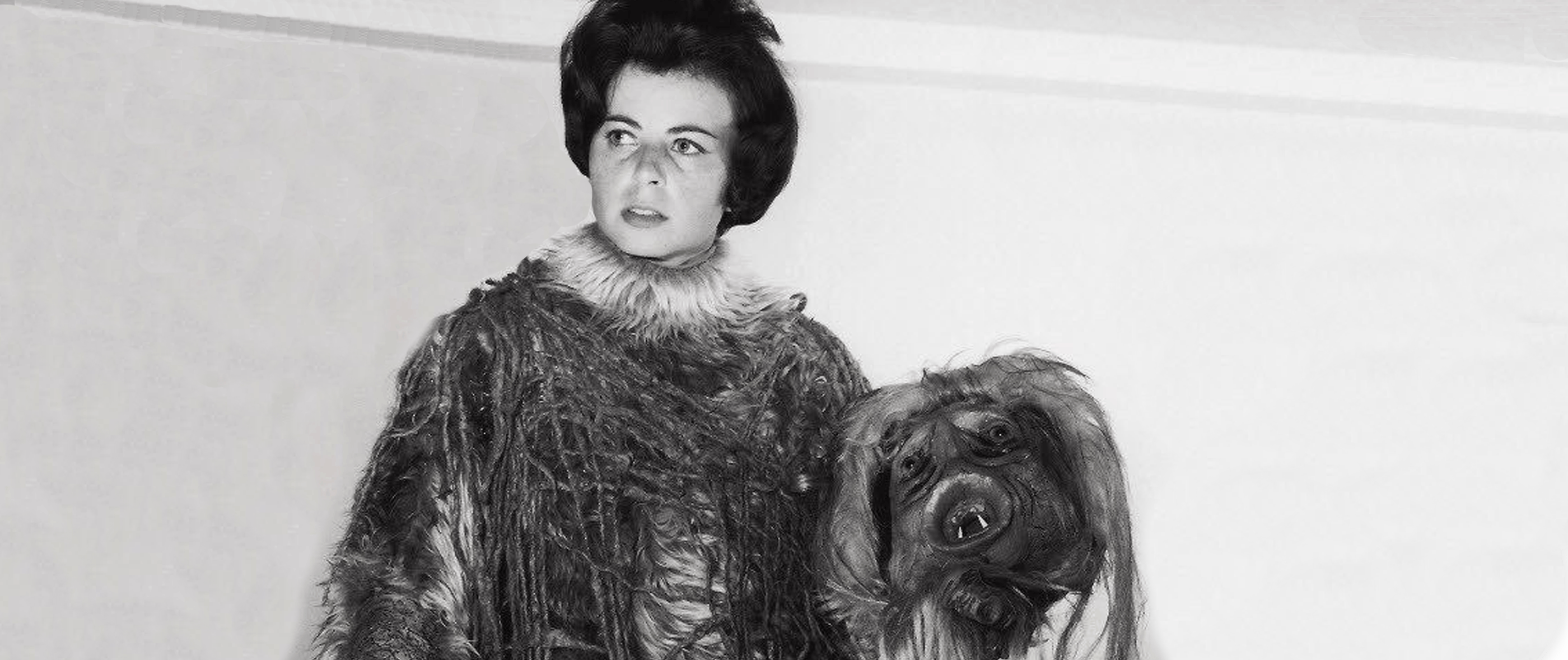
It all started 50 years ago today, September 8, 1966. Star Trek: The Original Series officially kicked off not with “The Cage” and not even with “Where No Man Has Gone Before.” Rather, the first episode fans saw that night was… “The Man Trap.” It’s neither the best nor the worst Star Trek episode, but everyone remembers the monster, the M-113 Creature, a/k/a The Salt Vampire. That creepy thing scared the hell out of people and it holds up today, thanks to the handiwork of Wah Chang and William Ware Theiss, and the performance of the person inside the costume, namely Sandra Gimpel.
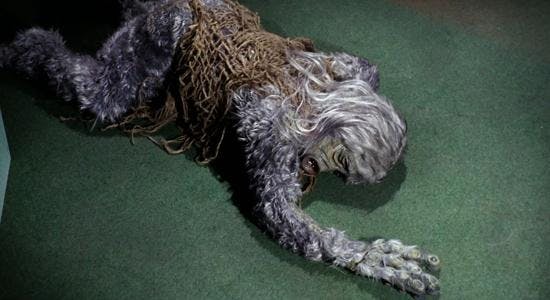
An actress, dancer and stuntwoman, Gimpel brought the character to vivid life. Intriguingly, “The Man Trap” did not mark her first Trek work; she’d played one of the veiny Talosians in the rejected pilot, “The Cage.” Gimpel went on to a long career in Hollywood as a stunt person and stunt coordinator, breaking plenty of ground for women along the way. She’ll turn 77 on September 17, but only recently ended a long run doubling Cloris Leachman on Raising Hope, and she’s still working, having just wrapped a movie in which she’s acting. StarTrek.com sat down with the vivacious Gimpel for an interview over breakfast during the recent Star Trek Las Vegas event. She discussed her Trek experiences and brought us up to speed on her life today. Here’s what she had to say…
What are you up to these days?
What's life like? I gotta tell you, it's great. I'm still working, thank the Lord. And still falling out of buildings and doing stunts. And as long as I keep going to the gym, the doctor said I’m fine. [LAUGHTER]
Do you have kids, grandkids?
I have a daughter. No grandkids. She's not married. She's a grown-up. And the funny part is, is that she was with somebody for quite a while, and then she broke up with him and bought a house about four blocks from me. And it worked out really nice.
Go all the way back. How, when, and why did you get into stunt work?
I was a dancer. And in Los Angeles, there was a place called Pacific Ocean Park. It had a Westinghouse Show, and I was dancing in the Westinghouse Show. I auditioned for West Side Story and got the job as a Jet, and Westinghouse wouldn't let me out of my contract. So I finished my contract and auditioned for The Pleasure of His Company, with Fred Astaire. Edith Head was picking the girls, and I got picked. Got in the business. I did 15 pictures with Elvis Presley as a dancer. And then Central Casting was actually sending people out. They had stunt coordinators, but Central would send you out for little acting things.
Star Trek happened with the Talosians. They sent me out on that because they knew I could handle costume work and stuff, from dancing. I got the job as a Talosian, in the original pilot, "The Cage." Star Trek then knew I could handle costumes, so they called me back to be the salt monster. They said, "Can you fall down?" I went, "Sure!" So I did the hit against the wall. After that, I started doing Lost in Space. Paul Stader, who was the stunt coordinator on that show, said, "You could come to double Billy Mumy and do his stunts, if you go to the gym three days a week. I will teach you how to do stunts." And I went, "Cool!" I did the show for two years, the last two seasons, and never stopped.
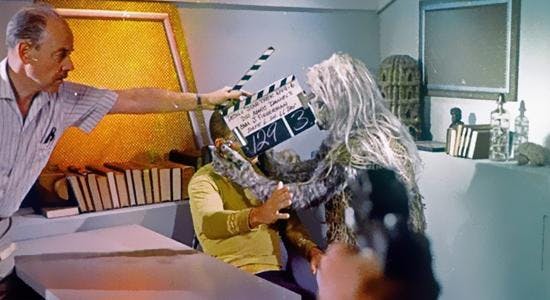
What is the hallmark of a good stunt? Is it that the audience absolutely believes it's the person who it's supposed to be, versus you?
Absolutely. You definitely want to be that person. For example, I doubled Cloris Leachman on Raising Hope the whole time. You cannot tell the difference between me and Cloris, because I watched how she walked, I watched her movements, and the directors were cracking me up because they were going, "Oh my God, you got her movements down perfect." So the fact that I had to sit in the table and then fall backwards in a chair, or whatever, it was the main part of me leading up to it, so they could cut her to me, so it looks seamless. And being safe, that's the other the other hallmark of a good stunt.
How many female stunt people were there when you were starting out? You broke a lot of ground…
I broke a lot of ground. There were not very many. You know, Jeannie Epper. The Epper family is big in stunts and always has been. They were working. There were other girls that worked. But I worked a lot. There was nobody short, so I doubled every kid in town. I doubled little boys, I doubled little girls. Then I was really lucky, because the guys took me under their wing and taught me. There were people like Mickey Gilbert, who's an old time stuntman. One thing he taught me was, “You check all your rigging. You make sure everything's safe. If you're not happy with something, open your mouth. Watch how other people do other rigging stuff, even if you're not involved. And ask questions.” I did all of that, and it saved my life a couple of times. Today, a lot of the kids think, "Oh, well, that's easy. I can go do that." And it's dangerous. You know? The stupidest little things can come up and bite you.
Stunt people often feel the effects of their life of work later on in life. You're walking beautifully. You seem like you're in great shape. How have you avoided that downside?
I hurt. [LAUGHTER]. I hurt; I’m not gonna lie to you. I work out every day that I’m not working-working. I try to eat healthy. If I can stay strong and my bones can stay good… They seem to be OK. I get a bone density test every year and the doctor goes, "OK, you're fine. Keep going."
What was your most recent show?
I worked on a feature called Why Him? that will be released in December, at Christmas. It's a comedy. I didn’t double anybody. I played the neighbor. George Fisher, who's another stuntman, played my husband. There's a scene when a helicopter comes down. I'm not supposed to tell you what happens. Go see the show.

Let's get back to Trek. Clarify something for us. How many episodes did you do?
I did the two, and then I was still doing some extra work, some background work. So I actually got to be a crew member a few times, just wandering around in the background.
Can we see you?
No. I don't even know which ones I did.
What do you remember of your experience on “The Cage”?
Well, the makeup took, like, two and a half, three hours. The interesting part about it is how different it was then from now. The heads. The Talosians talk by telepathy, so the veins would pump every time they talked. So they had an air bladder in the head, with the veins. Then a tube ran down my back and down my arm, and I had a ball in my hand. Every time I pushed it, the air would make the bladder move. That's why you'd see the Talosians standing so still. The costumes had really long arms, because they covered up us holding the ball.
And you started before to talk about landing your role as the M-113 creature…
They called me. They wanted somebody small, and they knew that I could do costume work, because I’d already worked for them. So they called and I went in and they fit me for the costume.
Did they do the costume first and then fit you, or did they bring you in and custom-fit the costume. Do you remember?
I think I went in for fittings. Yeah, I actually think I did go in for fittings. We had to make sure that thing fit, and that I could move into it. Then the arms were longer than my arms, because of all the suction cups. Then I had to put my hands on Mr. Shatner. [LAUGHTER]
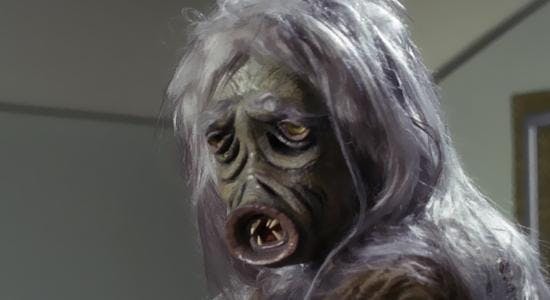
What was your reaction when you saw this costume? It's so ugly.
I know. I know. It was kind of funny to me. I enjoyed all that crazy stuff anyway, so…
Did you talk to Wah Chang, who created the costume, about it?
I think I did. I think so, because he was there with the costumes. The hard part about the costume was you couldn't see, because you had no peripheral vision, and then you couldn't look down. When you're walking towards your mark, you couldn't see your mark on the floor, where to stop, because the nose was in the way.
How hot was it?
It was hot and heavy. But the nice thing about that particular costume was you could take the head off.
What do you remember of your director, Marc Daniels? He needed a performance. He wasn’t just directing a stunt person.
Yep, and I had studied acting when I went to college. I took Theater Arts. At that time, L.A. City College was "the" prime place to go for theater. So, I had done a lot of acting. I did a lot of impromptu classes and stuff like that. So when he started telling me what to do, and I didn’t have any troubles. I could listen and do what he said. We rehearsed two or three times, to make sure I could hit my mark in costume. We did it without the head on, so I knew where I was going. And it worked out fine.
How did you enjoy working with William Shatner?
Oh, it was great. I mean, it was hard for me, because here was this star, and I had to put me hands all over him, all over his face, with these suction cups. But it worked out fine. He was a good scene partner. When they did the reverse shots, he was there, and some actors aren't.
This was one job among the many you had done. When did you realize that your appearance had started to take on a life of its own?
I didn’t realize until this 50th anniversary, if you want to know the truth. I had no idea.
You've done interviews over the years...
But nobody's ever really asked me about that.
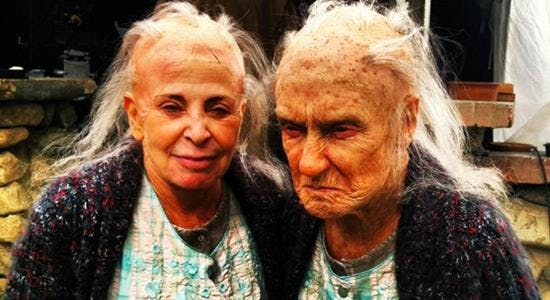
Actually, we read a full-on interview with you in The Christian Science Monitor, and they didn’t even mention it.
They never asked me. They never asked me. So I just never thought about it, you know? I’ve never gone to a convention before. So I didn’t understand that it was that crazy monster that they loved so much. Ninety percent of the people that walk up to me tell me that that was the scariest thing they'd ever seen, that they couldn't sleep at night. And I’m like, "OK."
It was really convincing...
Well, when you're inside that costume, you forget what you look like. You do. You forget until you take it off and look at it.
We’ve seen cosplayers come in the Salt Vampire costume at various events, but not yet this year.
Are you serious? People in my costume?
Yes.
Wow. Well, did you see the cake? Some people made a cake that looks like the monster. Crazy.
We're now celebrating Star Trek's 50th anniversary. What does it mean to you, to have this cool little niche in this giant phenomenon?
I'm grinning from ear to ear. [LAUGHTER] I am having so much fun at this convention. I am so delighted; I can't even tell you. It may sound silly, but I’m in awe of the fact that everybody loves me so much, and they come up to me and say, "Thank you for coming." I'm like, "Thank you for having me."

